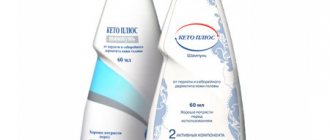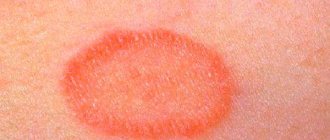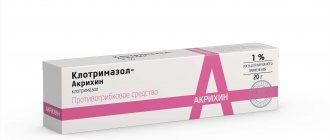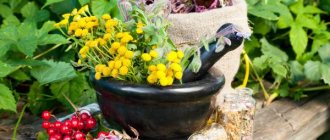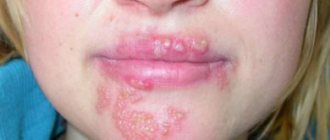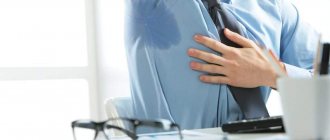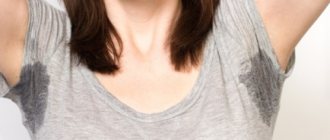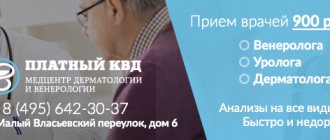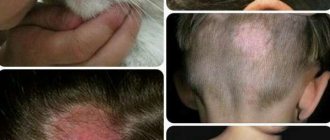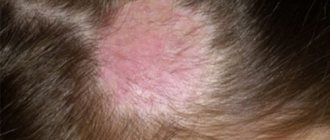How to get rid of lichen on the body at home quickly
You can become infected with the disease from contact with infected animals and from one person to another, as well as due to personal difficulties (weakening of the body’s defense response, stressful situations, protracted illnesses).
Therefore, if any suspicious rash appears on the skin, you should consult a doctor (dermatologist or infectious disease specialist) to determine the nature of the disease and its timely elimination. Treating an infection and painful condition without seeking medical attention in such situations is dangerous; it can lead to serious complications and cause the infection to become chronic, which will complicate treatment and delay recovery. Types of deprivation in humans photos with names and descriptions
Sulfur ointment for lichen
Usually the word lichen refers to fungal infections of the skin. This infectious disease in medical terminology is called microsporia or trichophytosis, and in the generally accepted version - ringworm. To treat it, you can use an inexpensive salicylic-sulfur composition. However, there are other, more effective means.
The sulfur composition has remained popular in the treatment of lichen in animals. Thus, veterinarians recommend using sulfur ointment for cats with large areas affected by lichen, if it is necessary to treat the entire body. It is also recommended to supplement treatment with internal antifungal medication.
Note: for a dog or cat, sulfur ointment will be the best and safest remedy. It will not cause poisoning, as can happen when stronger agents (fungin) are applied to a large part of the body.
Types of deprivation in humans photos with names and descriptions
There are several main types of lichen in humans. Let's look at the symptoms and treatment of each lichen in detail:
Pityriasis rosea (lichen Zhibera).
Inflammation appears in one or more areas of the skin. The appearance of flaky spots of round and oval shape, pink or light brown in color is specific. The size of the spots often reaches several centimeters.
The exact cause of pityriasis rosea has not yet been established. It appears in the cold season and mainly appears in adults than in children. The disease lasts about two months. Before the rash appears, body temperature most often rises. It is transmitted extremely rarely by airborne droplets.
Shingles
Ringworm is a viral infection that affects the nervous system and skin. Mycoses negatively affect both the skin and the nervous system. Most people suffering from this type of lichen are usually over 50 years of age, since with age a person’s immunity weakens greatly and leads to the appearance of this disease.
This type of lichen is accompanied by a severe headache, a pink burning sensation in the affected areas with blisters. Patients also often experience nausea and weakness. When previously unaffected children come into contact with people with herpes zoster, they develop typical chickenpox.
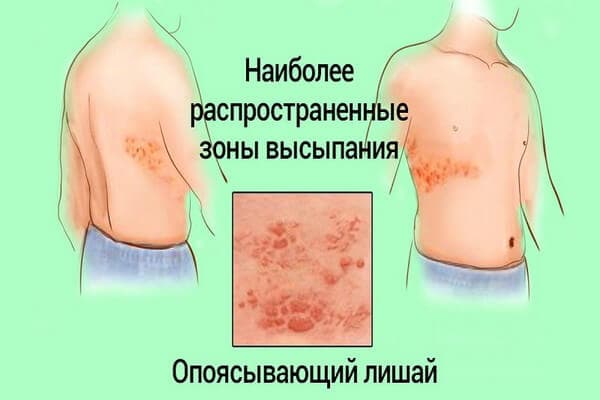
Pityriasis versicolor (tubular or versicolor)
The cause is a fungus of the genus Malassezia. Spots of various shapes and sizes appear on the human body. If the patient is too tanned, then this disease manifests itself in the form of white islands on the skin. In winter, when the body is pale, the spots may be brown or even with a pinkish tint. People often call this disease “sun lichen” or “beach lichen”, and because of its several colors, even “multi-colored”. It is not contagious.
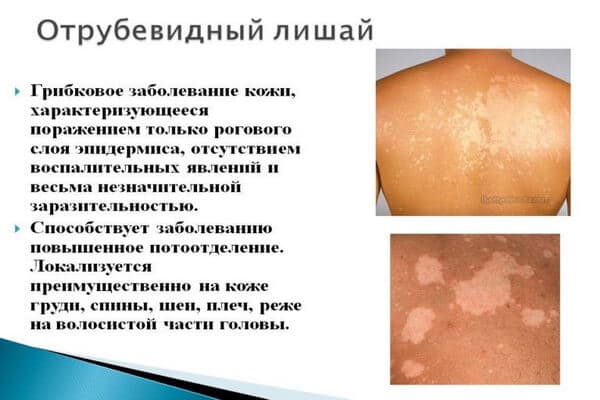
Ringworm (trichophytia, microsporia)
It is a fungal type of skin disease (fungi of the genus Trichophyton and Microsporum). Affects smooth skin and scalp. People and animals suffer from it, since the pathogen requires keratin, the structural protein of hair, to reproduce and grow.
Ringworm appears as pinkish spots that have jagged edges and are quite flaky. At the same time, the hair thins and breaks at a distance of 1-3 mm from the root, and areas of persistent baldness often appear.
The disease is most common among children under 12 years of age. Ringworm is contagious enough to cause outbreaks in children's groups. It does not cause serious damage to health, but the cosmetic defect in the form of bald patches causes significant discomfort to the sick. It is transmitted through household contact.
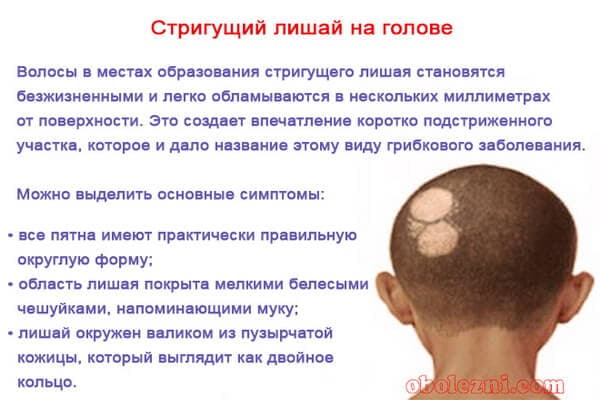
Lichen planus
This type of skin disease is characterized by the formation of a large number of red, flat nodules, which are accompanied by quite severe itching. At the moment, the true cause of the appearance of this type of lichen has not been established. The disease is not transmitted.
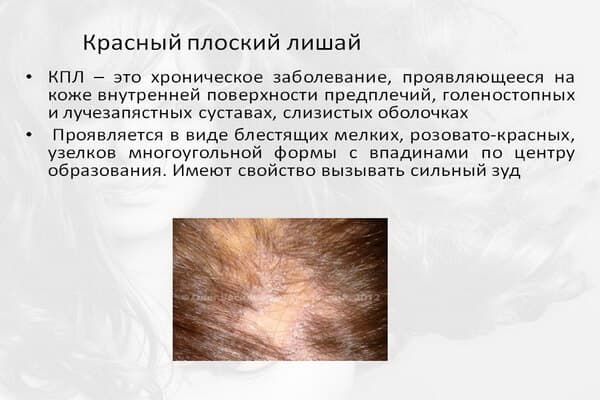
Ringworm (eczema)
It is a chronic inflammatory skin disease characterized by rashes, itching, periods of exacerbation and remission (improvement). There are two forms of eczema: acute and chronic.
With all types of eczema, swelling, redness of the skin, peeling, scratching, cracks, and spots ranging from deep pink to bluish-purple are noted. Severe itching, especially in the evening and after contact with water. There is a violation of the immune system, the functions of the digestive, nervous, and endocrine systems. The disease is not transmitted.
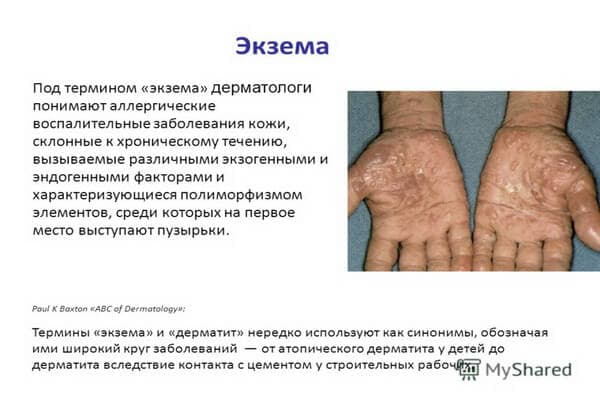
Lichen squamosus (psoriasis)
Chronic skin disease of non-infectious nature. Psoriasis appears as spots or growths that itch, itch, and cause discomfort. Most often, rashes affect the skin of the entire body (arms, legs, abdomen, neck, back) and scalp.
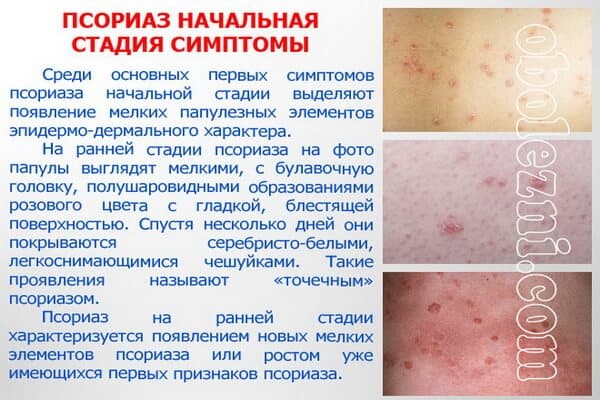
The main reason for the development of psoriasis (squamous lichen) is heredity. In humans, lichen planus is divided into 3 stages:
- Progressive (red spots and plaques appear that grow and merge with each other);
- Stationary (the rash begins to disappear, new ones do not appear);
- regressing (healthy skin appears in the center of the areas, and dark spots remain in the place of old rashes).
External therapy for herpes zoster
This type of shingles is caused by the varicella zoster virus. The appearance of a profuse skin rash along the nerve trunks is a secondary sign of a living virus in the body of a person who has had chickenpox. Thus, in this case, an ointment for skin ringworm with antiviral properties is needed. These are the drugs:
- “Herperax” is an immunostimulant, relieves pain, reduces foci of inflammation, the duration of treatment for ringworm is from five to ten days, applied to the affected areas of the skin four to six times a day;
- “Panavir gel” - destroys viruses at the cellular level, stimulates the immune system, relieves itching, anesthetizes and relieves inflammation, treatment lasts from two to five days, applied to the skin two to five times a day;
- “Acyclovir” (“Zovirax”) – the cream is applied to the skin for a week five times a day, relieves pain, reduces the risk of developing secondary infections, and accelerates the healing process of the skin;
- "Panthenol" - a healing drug is applied to the skin up to three times a day, treatment lasts about two weeks.
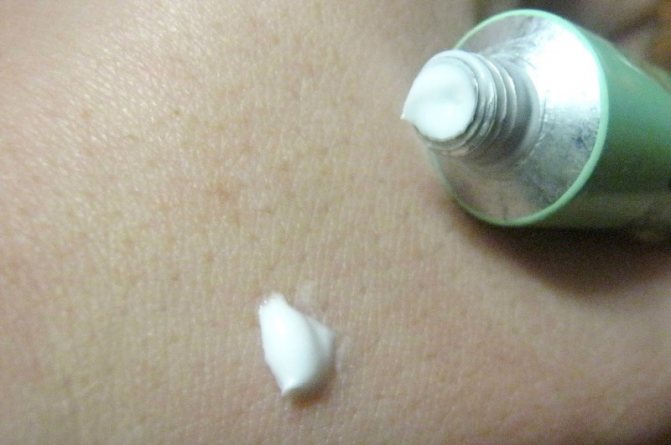
Signs of lichen in humans
Since mycoses are a contagious disease, if primary symptoms appear, it is necessary to consult a specialist.
Please note that the microorganisms that cause this disease sometimes live in the human body for a long time, and when the immune system is weakened, they suddenly become more active.
Therefore, you need to know what common signs of lichen in humans exist:
- spots in the form of circles or rings. The outer covering of the body in such places may be drier than the surrounding tissue, may peel, but may be slightly moist;
- Growths appear between the toes. The skin of the foot thickens and peels;
- redness, rash in the groin, desire to scratch the skin;
- loss of scalp;
- severe itching and rejection of dead epidermal cells in certain areas;
- the appearance of spots of unclear shape and different sizes.
Since there are several types of this disease, knowing about the characteristics of each of them, you can determine the form of the disease yourself.
Ringworm (trichophytosis)
Appears on the head, often at the crown. The infection is characterized by a pinkish rash with whitish scales. If there is hair on the head, it breaks off at the root.
Pityriasis rosea (lichen of Zhibera)
It is provoked by the herpes virus type 7. It starts with a small pink spot, then it gets bigger, and in the middle it turns yellowish and peels off. Then, within a few days, spots appear all over the body.
Shingles
It is caused by a virus that has a negative effect on nerve cells. In this regard, there is severe pain in the head, fever, and deterioration in health. Damaged areas of the skin (usually the torso) become covered with pimples with clear liquid inside. Then they dry out and the skin peels off.
Pityriasis versicolor (lichen versicolor)
Its culprit is a pathogenic fungus. The spots appear clearly, peel, and can be any color - white, beige, dark brown, reddish. Appears most often on the stomach, back, neck, chest and sides. It proceeds without painful manifestations.
Lichen planus
Affects various parts of the body (mucous membranes, nails, skin). The disease manifests itself as spots of red-lilac or light crimson color. The plaques have a smooth surface, sometimes there is slight peeling. The bubbles appear in small clusters, then merge together and plaques appear. Most often they occur in the bends of the elbows, on the palms and armpits.
Lichen squamosus (psoriasis)
Often it is classified as a separate disease. Light, silvery or gray spots appear on the skin, looking like frozen wax drops. Later they become red and itchy. Psoriasis manifestations are most often concentrated on the buttocks, bends of the limbs, feet, palms and scalp.
Weeping (eczema)
Redness, blisters, bursting papules, crusts appear around trophic ulcers on the leg, in places of purulent skin lesions. The wounds are very difficult to heal.

Ointments during pregnancy
Ringworm during pregnancy does not pose a risk to the health of the mother and child, but treatment should not be neglected for advanced or chronic forms. In such cases, the disease has serious consequences. Ringworm in pregnant women should be treated only with external use. The affected areas can be treated with apple cider vinegar; it helps relieve itching and fights flaking. Products containing zinc - zinc, salicylic-zinc paste, as well as Sudocrem cream - will help remove lichen from the body of pregnant women. For a quick recovery, you can apply Vishnevsky ointment; this drug has antiseptic and healing properties and is used at any age, including during pregnancy and breastfeeding. But which remedy is better and more effective in this case should be determined by the doctor, taking into account the woman’s position, as well as the stage of the pathology.
Reasons for depriving a person
The causes of lichen in humans are varied and depend on the influence of certain negative factors, such as, for example:
- prolonged stressful situations;
- prolonged exposure to cold;
- bites of harmful insects and others;
- weakened immunity;
- viral infections;
- long-term use of antibiotics;
- heredity.
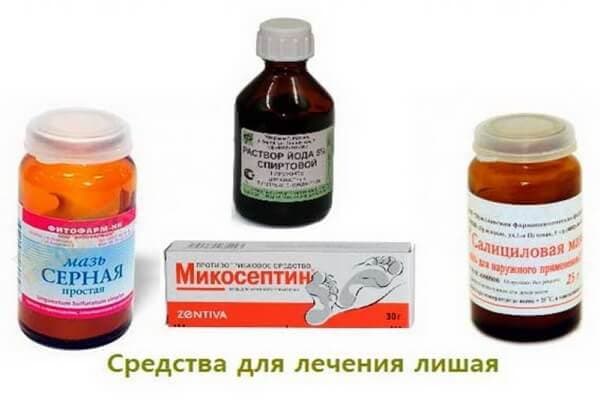
Manifestation in children
Pityriasis rosea is rare in children. But most of these cases occur between the ages of 4-12 years. This childhood disease is considered infectious, although today there is no exact information about the causes of its occurrence.
5-10 days after the appearance of the maternal plaque, a profuse rash appears on the child’s body. It is presented in the form of pink or red spots with a yellow tint with fuzzy oval outlines. The rashes are located along the lines of skin splits, often affecting the shoulders, hips and sides of the torso.
Although the disease does not pose a great danger, the fight against the disease must be started immediately. Treatment of pityriasis rosea in children mainly consists of boosting immunity. For this, doctors prescribe Ascorutin - tablets containing vitamins C and P, which are powerful antioxidants, or other vitamin therapy.
Treatment of deprivation in humans: ointments
Ointments are topical medications intended for the treatment of this skin disease. Treatment of lichen in humans with ointments is carried out depending on the type of mycosis and the degree of its contagiousness.
Treatment with the selected medication should be started after consultation with a dermatologist and a special allergy test. The choice of ointments for lichen for children should be treated with increased responsibility and caution. Let's consider some drugs:
- Sangviritrin. It is used as a broad-spectrum antibacterial and antifungal agent for pityriasis rosea.
- Hydrocortisone. A drug based on corticosteroid hormones for severe itching on the affected areas of the skin.
- Sulfuric ointment. An external medicinal product used to treat scabies, seborrhea, psoriasis, lichen and other dermatological diseases. Apply to affected areas of the body twice a day. Contraindications to the use of sulfur ointment are: hypersensitivity to its components, age less than 2 years, breastfeeding and pregnancy. The duration of treatment is 5 days.
- Acyclovir. This antiviral drug is prescribed very often for the treatment of herpes zoster, as well as pityriasis. They apply it to the affected area of the skin and when it gets into the cells affected by the virus, it is integrated into the DNA system of the virus itself, destroying it from the inside.
- Miconazole. An antifungal agent is used in the treatment of pityriasis versicolor in humans. Active substances, getting inside the virus, change the composition of lipids in the membranes of its cells, which leads to blocking the synthesis of ergosterol and the death of the microorganism.
- Lamisil. Destroys fungus and prevents its proliferation. Use for at least 5 weeks.
- Mycospor ointment. It also has the property of killing fungus. Rub the affected area. The product is used for 5 weeks.
- Salicylic ointment. Reduces inflammation and also kills fungus. The skin is covered with either a film or a sterile napkin over the ointment.
- Sulfur-tar ointment. It has the ability to disinfect skin affected by fungus, as well as the skin around the inflamed area. Rub it into the lesion with massaging movements; the ointment can also be covered with a film on top.
Ointments can be combined with iodine tincture: in the morning, iodine is applied to the area affected by lichen (to dry), and in the evening before bed, the same area is lubricated with ointment.
Review of drugs for different types of lichen
To choose the optimal therapy, you must first consult a dermatologist. The initial assessment is carried out through a visual examination of the skin problem, later the necessary tests are prescribed:
- skin scrapings;
- blood tests;
- inspection using a special lamp;
- iodine tests.
Only after accurately determining the type of lesion are suitable medications selected.
In most cases, antifungal and antiviral agents are used to treat lichen. They should relieve the main symptoms of lichen - inflammation, specific spots and itching. Additionally, corticosteroid ointments and antihistamines and oral antibiotics may be prescribed.
Pityriasis and ringworm
Ringworm appears both on the scalp and on non-hairy skin.
- Before treatment, it is necessary to disinfect the affected area; iodine or alcohol solutions are suitable for this - Vokadin, Nitrofungin, Yodicirin.
- Before using medicinal ointments, you must read the instructions: many drugs should not be used to treat children or during pregnancy.
| Name of ointment | Mode of application |
| Sulfuric ointment | It has a disinfecting effect and has virtually no contraindications. The main active ingredient is precipitated sulfur; the product also contains petroleum jelly, an emulsifier and purified water. Has antiparasitic and antimicrobial effects. The average duration of treatment is 5 days, the ointment is applied in a thin layer 1-2 times a day. The use of sulfur-tar mixture is allowed. |
| Vishnevsky | Antibacterial drug that improves skin regeneration. The basis is tar, the product is produced in the form of liniment - a liquid substance that is easily applied to wounds and does not damage problem areas. It is allowed to simply apply ointment to the lichen spot, or apply a bandage with fixation. You need to change the napkin 1-2 times a day, repeat until the problem disappears completely. |
Pityriasis versicolor is a fungal disease that has several other names: it is also called cauliflower, sunburn or patchy dermatosis. Pathogenic microorganisms attack the top layer of skin and reduce melatonin production. This causes the skin to become patchy.
| Name of ointment | Description |
| Nizoral | The active substance is ketoconazole. The cream is applied to cleansed, dry skin 1-2 times a day, the duration of the treatment course depends on the severity of the disease and the number of affected areas. The product is allowed to be used during pregnancy and lactation. |
| Triacutan | Refers to complex drugs. Clotrimazole, which is part of the composition, is an antibacterial and antifungal component, betamethasone dipropionate removes inflammation and itching, and gentamicin has an antimicrobial effect. The skin should be treated once every 12 hours for 3-4 weeks. |
| Dermazol | Available in the form of shampoo or cream. Both forms can be used to treat lichen, depending on the location of the spot. Dermazol is indicated for pityriasis versicolor and versicolor (Malassezia furfur). Treatment with the cream lasts 14-20 days, it is applied in a thin layer up to two times a day. The shampoo is used daily for one week. |
Also used for the treatment of both types of lichen are:
- Fukortsin;
- Exoderil;
- Yam ointment;
- Mycozoral;
- Sinalar;
- Terbinafine.
You must first consult a doctor.
Shingles
Shingles is caused by the herpes virus. It affects the nerve endings, and the rash usually follows the course of the costal nerves. It looks like numerous papules filled with clear liquid. Over time, the bubbles burst, turning into dense crusts. Skin manifestations are corrected with antiviral drugs and agents to enhance immunity.
These include:
| Name of ointment | Brief instructions |
| Acyclovir | An antiviral drug that forms a defective cell that prevents the further spread of the disease. It is recommended not only to purchase ointment for local use, but also to take tablets of the same name. Apply a thin layer to the problem area and repeat the treatment every four hours. The maximum treatment period is 10 days. Adverse reactions include the possibility of allergic dermatitis. |
| Herperax | The active substance is acyclovir, the effect is similar. Apply the cream to the affected areas 4-6 times a day; it is advisable to use a cotton swab for treatment. It is recommended to start treatment immediately after the rash appears, which promotes rapid healing. The drug is allowed to be used only for the treatment of adults. |
| Zovirax | Contains acyclovir and hydrocortisone, which has antiexudative, antipruritic, antiallergic and anti-inflammatory effects. With timely initiation of therapy, it accelerates the healing time of the existing rash and prevents the appearance of new blisters. The product can be used by children over 12 years of age. Treatment is repeated every four hours. The duration of the course is at least five days. |
| Panavir | Gel based on potato shoot extract, antiviral of plant origin. Apply a thin layer every 4-5 hours. The duration of the course takes 4-10 days, depending on the degree of skin damage and how quickly treatment was started. Before treating rashes, you need to wipe them with an antiseptic solution. |
Pink
Gibert's pityriasis rosea is an inflammatory disease also known as roseola exfoliating. It is considered an infectious disease, but the exact causative agent has not yet been determined. Even if this type of pathology is not treated in any way, it will go away on its own within a few days. But the complete absence of therapy is fraught with frequent relapses of the disease and transition to more severe forms.
To get rid of the unpleasant manifestations of lichen, you need:
| A drug | Description |
| Lamisil | A cream whose active substance is Terbinafine. Refers to antifungal agents that cause the death of pathogenic organisms. May be used to treat children over 12 years of age. The skin is treated 1-2 times a day, problem areas are first cleaned and dried. Treatment lasts about two weeks. You will have to refuse the drug if you are intolerant to the components. |
| Zinc ointment | Disinfecting, astringent, adsorbing and drying ointment. Apply to a clean, dry surface and rub in gently. Within a week, the main symptoms of lichen disappear; the full course is about 10 days. In difficult cases, it is advisable to use salicylic-zinc paste - it dries the skin more and kills the infection faster. |
| Levomekol | An ointment that helps relieve inflammation, eliminate germs and gram-negative microorganisms. Quickly penetrates tissue and promotes accelerated healing of damage. The product is recommended to be applied to a gauze or bandage napkin and applied to the rash for several hours until completely absorbed. The bandage is fixed with adhesive tape and changed once a day. |
| Sinaflan | Ointment based on fluocinolone acetonide. It has analgesic, anti-inflammatory, antipruritic and anti-allergenic effects. Suitable for the treatment of skin pathologies in children. Apply to the skin 1-3 times a day until the lichen spots completely disappear. |
Red flat
Lichen planus is a multifactorial dermatoses. The disease can affect the ankles, forearms, mucous membranes, wrist joints and even fingernails or toenails. This type usually manifests itself against the background of other diseases of the internal organs.
For treatment the following are used:
| A drug | Description |
| Akriderm | Ointment with gentamicin, betamethasone and clotrimazole. Relieves inflammation and suppresses the inflammatory process, has antibacterial and anti-allergenic effects. Apply to problem areas of the skin 1-2 times a day. The duration of treatment is from a week, if during this period there are no visible improvements, you should choose another remedy. |
| Triderm | The cream is used to treat several types of lichen. The composition includes antibiotics, anti-inflammatory and antifungal components. Apply to the affected area twice a day: before bed and in the morning. The duration of such therapy depends on the location of the rash and the body's reaction. If there is no effect within 3-4 weeks, the diagnosis requires clarification. |
| Advantan | Methylprednisolone aceponate cream. Removes symptoms of inflammation and signs of allergic skin diseases. It is allowed to apply only a thin layer to avoid an overdose of the drug, which can lead to skin atrophy and the appearance of acne. Suitable for treating children over four months of age. The average course duration is from 1 to 4 weeks in young patients, up to 12 weeks in adults. |
| Ichthyol ointment | An anti-inflammatory antiseptic that is used to treat a number of infectious and inflammatory skin diseases. Relieves itching, pain and burning, softens scabs and dries weeping wounds, promotes healing. Apply a thin, even layer to the rash and rub in lightly until warm. If allergic reactions occur, further use of the ointment will have to be abandoned. |
Treatment of deprivation with folk remedies in humans
As an addition to the medications prescribed by a specialist, ointments can be used when treating deprivation with folk remedies in humans. You can make them yourself. For example:
- Birch tar ointment. Combine tar (buy at the pharmacy) and fresh butter in equal proportions. Stir until smooth. Apply to affected areas and bandage. Has a pungent odor.
- Ointment made from calendula, hops and burdock. Mix a decoction of 20 hop cones, 10 g of calendula flowers and 20 g of burdock with Vaseline in a proportional ratio of 1 to 2. Apply to infected areas up to 6 times a day.
- Soft pork lard and sifted wood ash - in equal proportions. Mix and rub the resulting ointment into the skin twice a day.
- Horse sorrel ointment for lichen. Mix 1 tbsp. l. horse sorrel root powder with 1 tbsp. l. sour cream, apply the resulting mixture to the stains in the morning and evening (15-20 minutes), then rinse with warm water
- Ointment made from 200 g of vegetable oil, 100 g of aloe, 50 g of laundry soap, 50 g of rosin, 50 g of beeswax. Cut into small pieces, boil and strain. Used in the treatment of any type of lichen, foot fungus, eczema.
Treating lichen planus
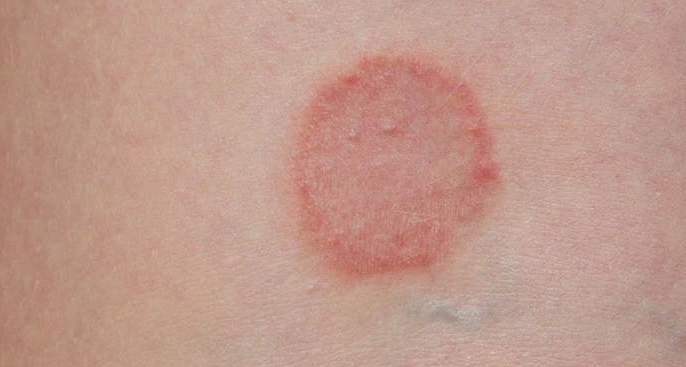
This type of infectious dermatosis is caused by a violation of metabolic processes in the body, reminiscent of an allergic reaction. During the period of lichen planus, the skin is very itchy, the resulting papules unite into small and large islands. Therapeutic therapy is aimed primarily at relieving itching, swelling and inhibiting inflammatory processes in the upper layers of the skin.
Ointments such as:
- "Triamcinolone" - the maximum permissible treatment period does not exceed twenty-five days, applied to the affected areas of the skin in a thin layer two to three times a day;
- “Celestoderm” - therapy with this drug lasts about two weeks, is suitable for the treatment of lichen in adults and children, applied to lichen spots one to three times a day;
- “Flumetasone” - this cream is used to treat lichen for two weeks; the affected surface of the skin is smeared with it one to three times a day;
- “Advantan” - treatment with this cream lasts twelve weeks in adults, four weeks in children, applied to the lichen islands once a day;
- Hydrocortisone 1% ointment - the period of treatment for lichen with this medicine can last from six to twenty days, suitable for adults and children, applied to the affected areas of the skin two to three times a day;
- Prednisolone ointment 0.5% - lichen is treated with this remedy in adults for eight to fourteen days, in children - up to seven days, applied to the skin for two to three days.
The above ointments belong to the group of glucocorticosteroids - hormone-containing drugs. They promote artificial immunosuppression, which is necessary for allergic reactions to any irritant - internal or external. The expected effect from their use is sustainable. However, these drugs are prescribed when there is no alternative because they are addictive.
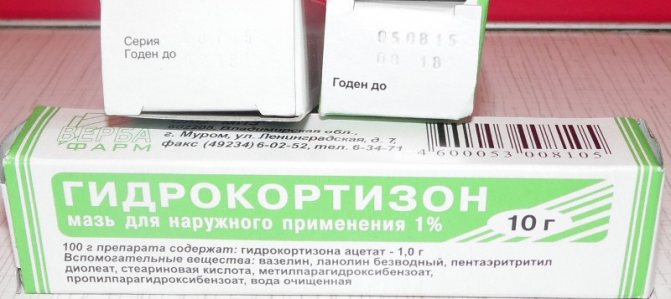
The following folk remedies are also used for lichen on the human body:
- Yeast dough. Place the yeast dough, when it has risen, take a piece, place it on the affected area, wrap it in cellophane on top and bandage it with a cloth. Keep the compress for 2 hours, then rinse with warm water. The course is from 3 to 5 days.
- Peas. Wash 200 grams of peas, add 3 glasses of water, boil over low heat for a quarter of an hour. Lubricate the areas affected by lichen with this decoction several times a day or apply compresses with this decoction. Duration: until complete recovery. Instead of peas, you can take buckwheat.
- Cranberry or viburnum. Lubricate lichen spots with fresh berry juice.
- Burdock. Pour boiling water over burdock (burdock) leaves, infuse and apply as compresses.
- Smoke. Take a pine log (the more resinous, the better), and pluck splinters from it. Set the torch on fire and extinguish it by directing the smoke towards the lichens. Do 3 times a day for 10 days.
- Celandine. Squeeze the juice from the celandine and mix in a 1:1 ratio with vodka. This composition treats any type of lichen.
- Golden mustache. Squeeze the juice from the plant tendrils or leaves. Wet a cotton swab and make a compress on the lichen (2-3 hours).
- Calendula. Wipe the plaques with the juice of fresh marigolds.
- Copper sulfate. 1/2 tsp. Stir copper sulfate in 1 tbsp. l. sour cream. Leave for 3 hours. Lubricate the ringworm with this ointment after 2-3 days.
- Aspirin. Pour 10 g of aspirin tablets into 100 g of alcohol and leave for 24 hours. Lubricate the plaques 2 times a day with this solution.
- Fir oil. Mix fir oil with vodka in a 1:1 ratio, shake before use, wet a cotton swab with the mixture and apply to the sore spot, including healthy skin 2 cm around. Hold for 5 minutes, pressing tightly to the body. Then remove the cotton wool and lubricate the sore spot with Vaseline or olive oil. Do this 5 times a day
- Ash. Take about 1 tbsp of sifted wood ash. l. Dip your finger in water and then in ash. Apply to the affected area and repeat the procedure if necessary.
Sulfur ointment for nail fungus
Fungal infections of the skin and nails are also treated with sulfur ointment
. It is applied to the nail plate and adjacent areas of the skin once a day (at night, after a bath, just before bed). The treatment period for fungus with sulfur ointment is about a week.
Sulfur ointment is universal. Its composition acts against various fungal infections. However, it may not be effective enough. In this case, sulfur ointment is replaced with a more aggressive drug - sulfur-salicylic ointment
.
Prevention of lichen in humans
Every lichen is contagious, so when in contact with a sick person you must follow the rules of hygiene. People need to take the following measures to avoid infection:
- after any exit outside, you must wash your hands with soap and use various disinfectants (spray, wipes, gels, etc.);
- do not have contact with stray animals, limit contact with pets;
- do not use other people’s personal hygiene items;
- give the infected person a separate bar of soap;
- no need to try on or wear other people's clothes and hats;
- strengthen the immune system and regularly harden yourself, dry yourself, go to the bathhouse, play sports, take a vitamin complex, give up harmful foods and habits;
During periods of exacerbation (autumn, spring), it is advisable to go on a hypoallergenic diet to reduce the risk of disease.
Diagnostics
The diagnosis is made during a visual examination if the patient has a primary focus of pityriasis rosea (maternal plaque), as well as the presence of spotty rashes typical for this form of pathology.
In the process of making a diagnosis, it is imperative to differentiate Zhiber's disease from a number of diseases with similar symptoms (dermatitis, seborrheic eczema, psoriasis, mycoses of smooth skin, pityriasis versicolor, guttate parapsoriasis, syphilitic roseola and Lyme disease).
To exclude the above diseases, material is taken from the patient from the lesions, and serological diagnostics are also performed (Wassermann reaction). In some cases, the patient undergoes examination of the lesions using a Wood's fluorescent lamp. [ads9]
READ ALSO: Pimples in the hair on the head: the main causes of formation, how to treat purulent rashes
What is pityriasis rosea
The disease pityriasis rosea (Zhiber's pityriasis) refers to skin infections accompanied by itching and allergic rashes throughout the body (see photo below). The disease is viral in nature, but its causative agent has not been precisely identified. The disease occurs due to weakened immunity, after an infectious disease, against a background of stress, and with metabolic disorders. In rare cases, skin lesions disappear on their own, but it is better not to let the situation get worse, but to consult a dermatologist in a timely manner.
What ointment is used to treat lichen
Ringworm is a disease that affects the skin and scalp. The patient notes the appearance of severe itching, spots on the skin, and pain. Without adequate therapy, the pathology becomes chronic, and the likelihood of relapse increases.
Getting rid of lichen involves complex measures, an important component of which is the course use of local medications: cream, gel, ointment. The medication is selected taking into account the type of lichen and the advanced stage of the disease.
In addition, during therapy it is necessary to take into account the root causes of the development of lichen and fight them first. Predisposing factors may be a decrease in immune defense, overstrain of the nervous system, and chronic intestinal diseases.
All modern drugs for lichen are very effective and rarely provoke allergic reactions and other undesirable consequences.
The most effective ointment for lichen in humans is the one that is selected taking into account the diagnosis, concomitant pathologies and the condition of the patient’s body.
Prevention
Prevention includes a set of general body-strengthening procedures. You must follow the rules:
- healthy food;
- strengthening the immune system;
- moderate exposure to direct sunlight;
- taking vitamin complexes;
- use mild detergents without aggressive chemicals for washing;
- use of moisturizing and nourishing creams;
- avoiding hypothermia;
- timely and effective treatment of colds;
- timely treatment of wounds and abrasions with antiseptics;
- avoiding stress;
- refusal to wear synthetic clothing and underwear made from natural wool;
- maintaining personal hygiene;
- choosing an active and healthy lifestyle.
